5.1
Achievements
The Programme on Source
Separation of Domestic Waste has had a successful start, enrolling
497 housing estates in its first two years against a target
of 470. As at end 2006, some two million people or 29% of
the population could participate in source separation of domestic
waste and recycle a much wider range of recyclables. Most
of the estates had recorded impressive increases in waste
recovery:
- Among the housing
estates with expanded ground-level waste separation facilities,
some 120 of them reported that their waste recovery rates
increased by an average 36%, by collecting a wider range
of recyclables.
-
Estates that installed waste separation facilities on
each floor performed even better ¡V some 70 of them reported
an average 54% increase in their waste recovery rates.
-
About 80 participating
estates had never done any waste separation and recovery
before joining the programme. Some estates installed waste
separation facilities on each building floor and others
set up waste separation bins on ground floor.
-
The improved
recovery of waste helped to reduce the quantity of waste
requiring disposal to 3 ¡V 4% overall among the participating
housing estates.
In 2006, the domestic waste recovery
rate has increased to 20%. At the same time, domestic waste
loads have also continued to drop, with a decrease of 3% in
2006 when compared to 2005.
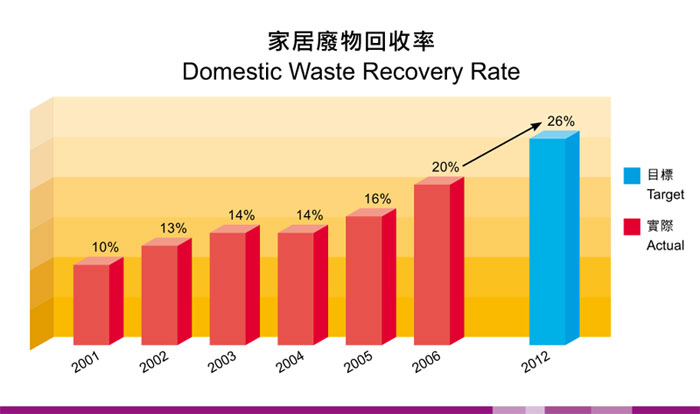
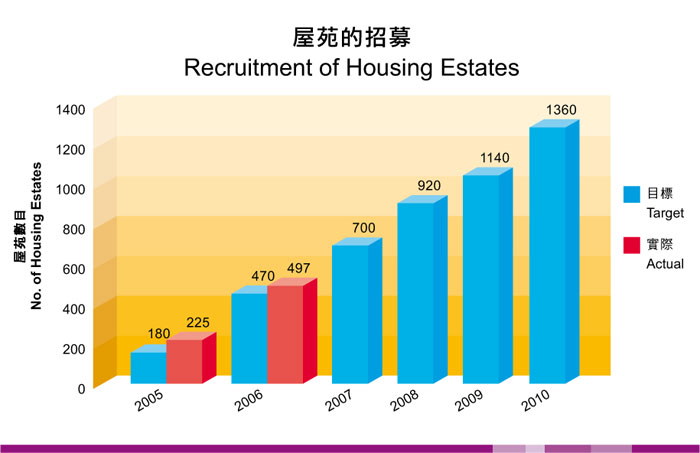
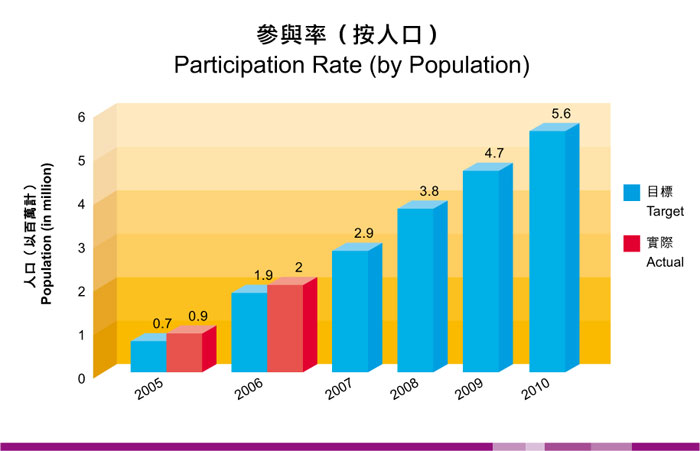
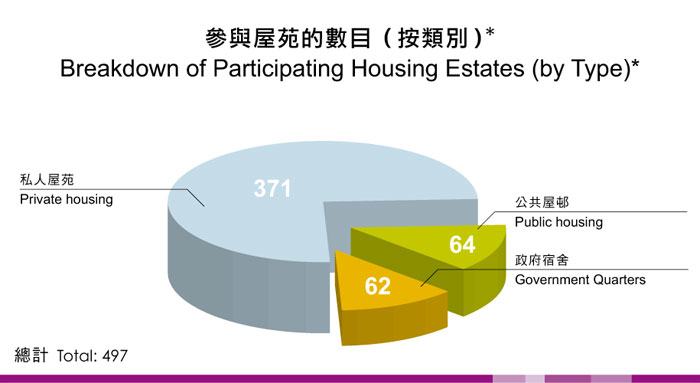
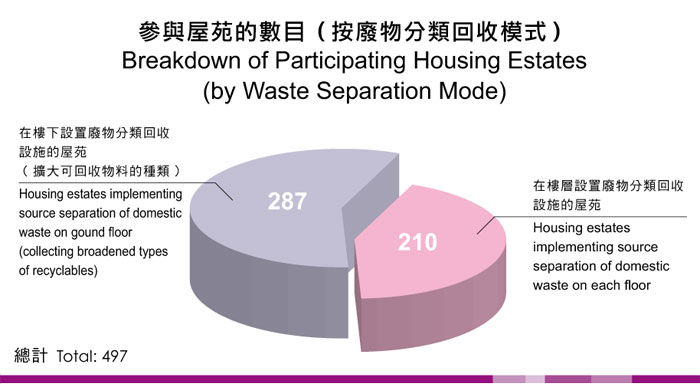
*Note:
Some 1,200 private housing estates and all 160 public housing
estates will join by 2010 and by 2012 respectively. In public
housing estates, the Programme is co-ordinated by the Housing
Department, Hong Kong Housing Authority and Hong Kong Housing
Society. All 62 government quarters under the Government Property
Agency have now joined the Programme.
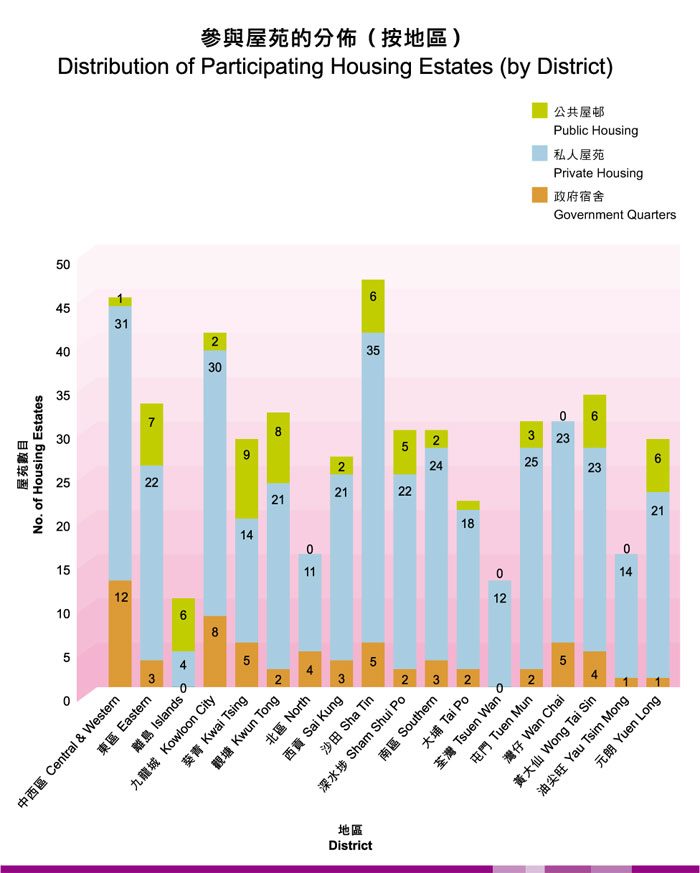
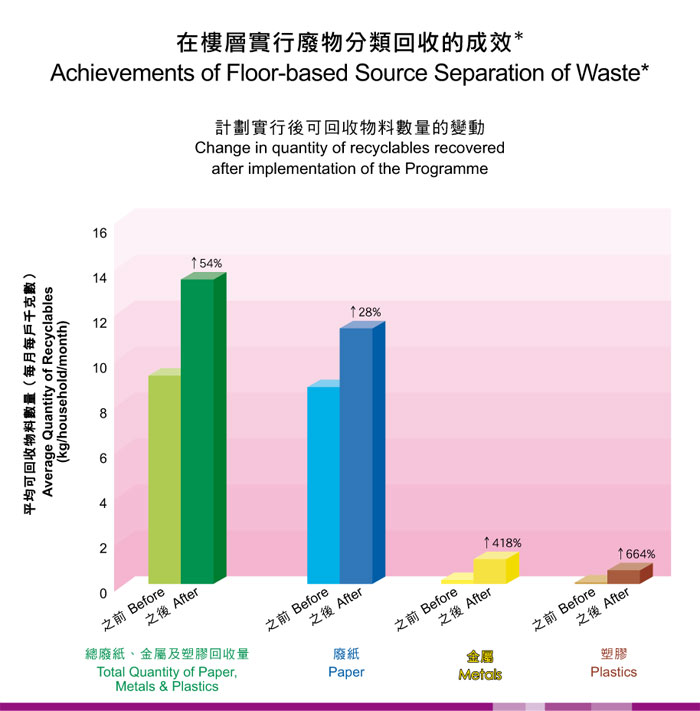
* Note:
Based on 70 housing estates that have introduced waste collection
on each floor. Prior to joining the Programme, collection
facilities were at ground level and accepted only waste paper,
aluminium cans and plastic bottles. These estates have also
recorded reliable baseline data.
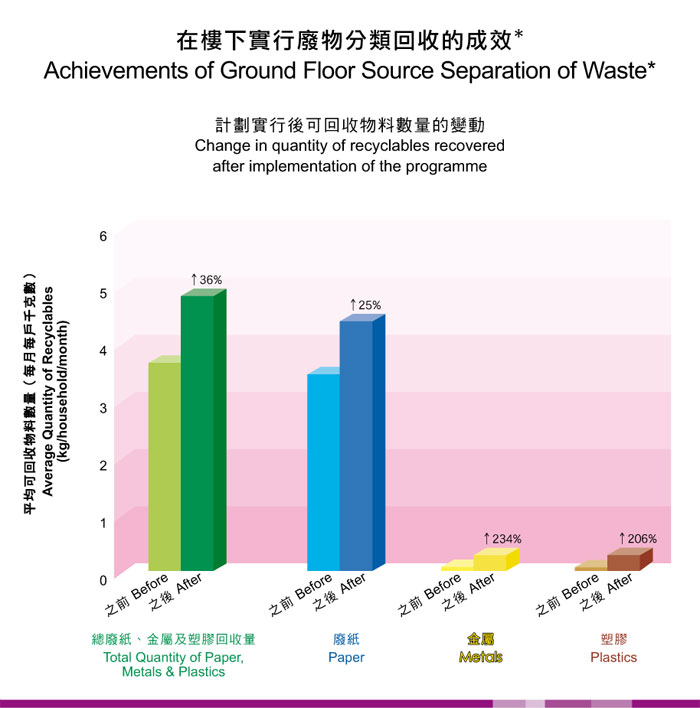
* Note:
Based on 121 housing estates with waste collection facilities
on the ground floor. Previously they collected only waste
paper, aluminium cans and plastic bottles, and they are now
collecting a wider range of recyclables. These estates have
also recorded reliable baseline data.
|